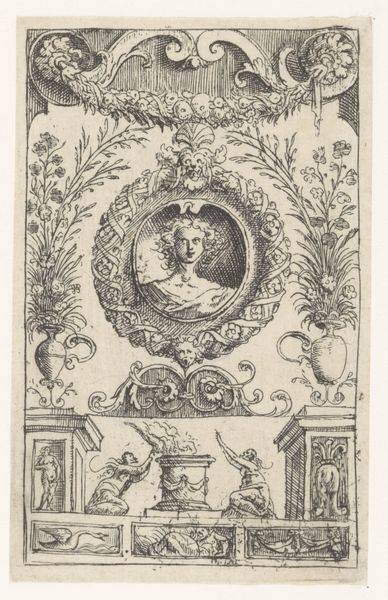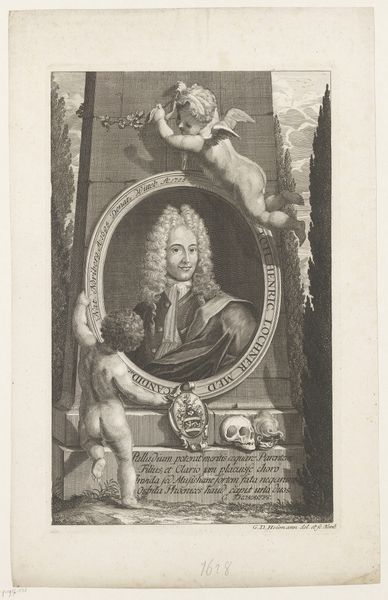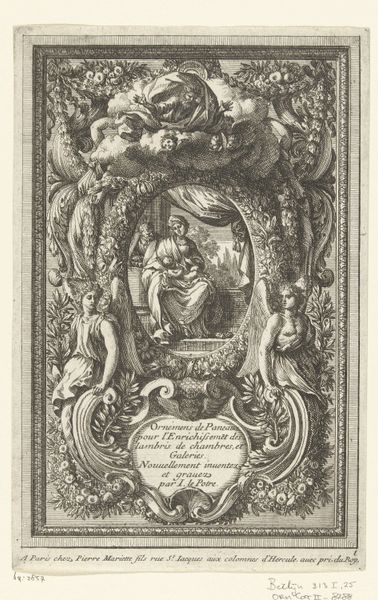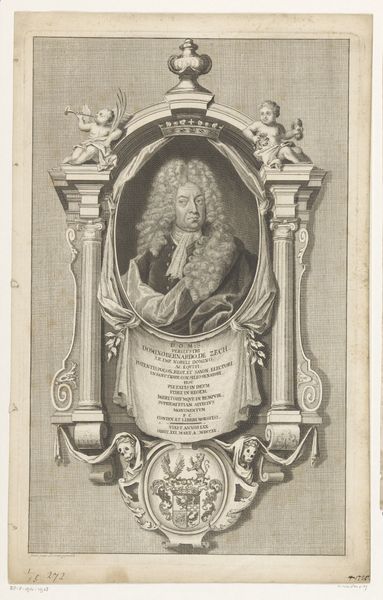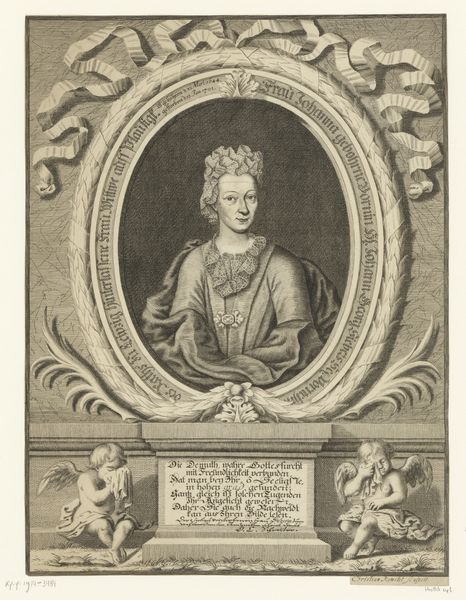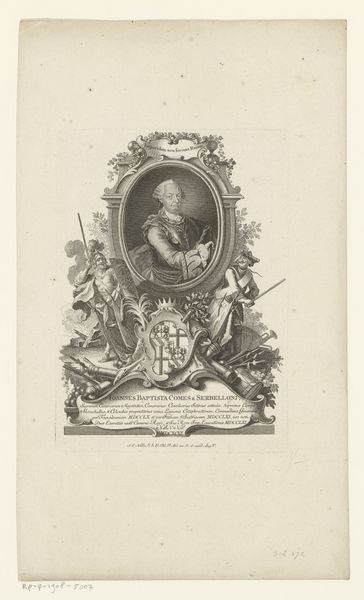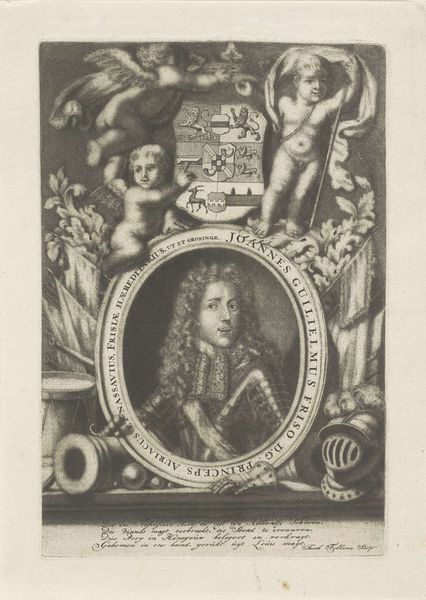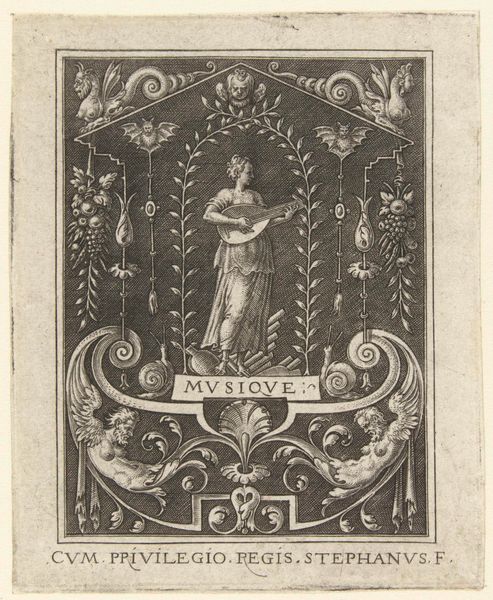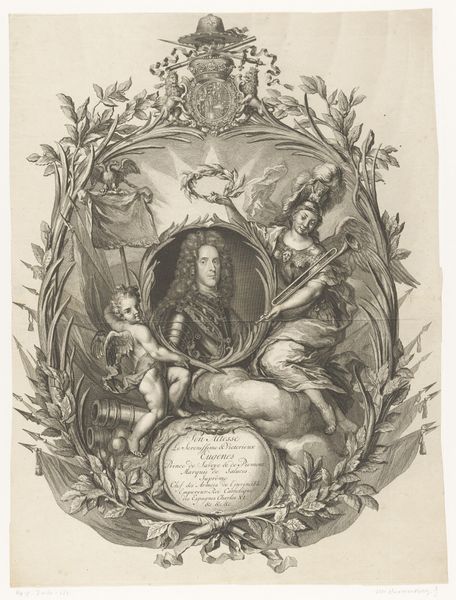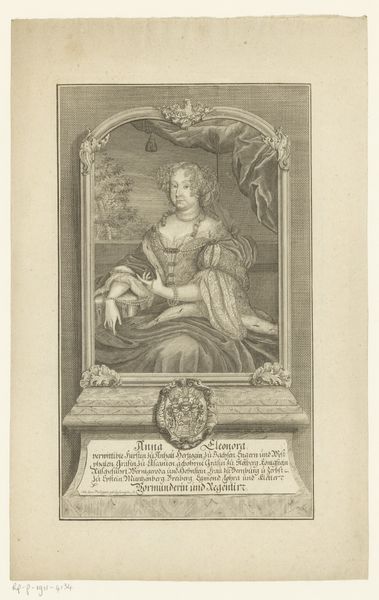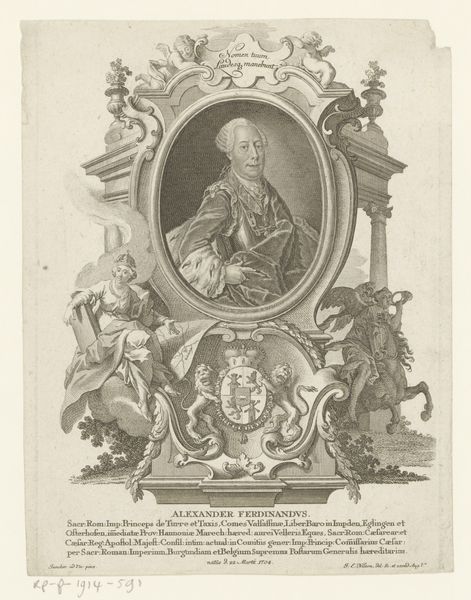
print, engraving
#
portrait
#
baroque
# print
#
engraving
Dimensions: height 294 mm, width 200 mm
Copyright: Rijks Museum: Open Domain
This is C. Ottenhofer’s print of Maria Elisabeth Wiessner. Likely created in the German states, the print shows the sitter framed by symbolic emblems alluding to her status and virtues. In the 17th century, printmaking played a vital role in shaping social norms and solidifying class hierarchies. Engravings like this served as vehicles for communicating social values, and in many ways, were a commercial product traded across Europe, particularly in urban centres. The elaborate frame combines religious symbols with emblems of wealth, telling us about Maria Elisabeth's familial background, and social status. The amount of work involved would require a print workshop employing skilled artists, as well as an awareness of what symbols were considered appropriate for the sitter's social rank. To better understand this print, one could study the history of printmaking in the German states, the Wiessner family archives, and the iconography of status and virtue in seventeenth-century portraiture. Through understanding the contexts in which art is created and consumed, we can better interpret its meanings.
Comments
No comments
Be the first to comment and join the conversation on the ultimate creative platform.
